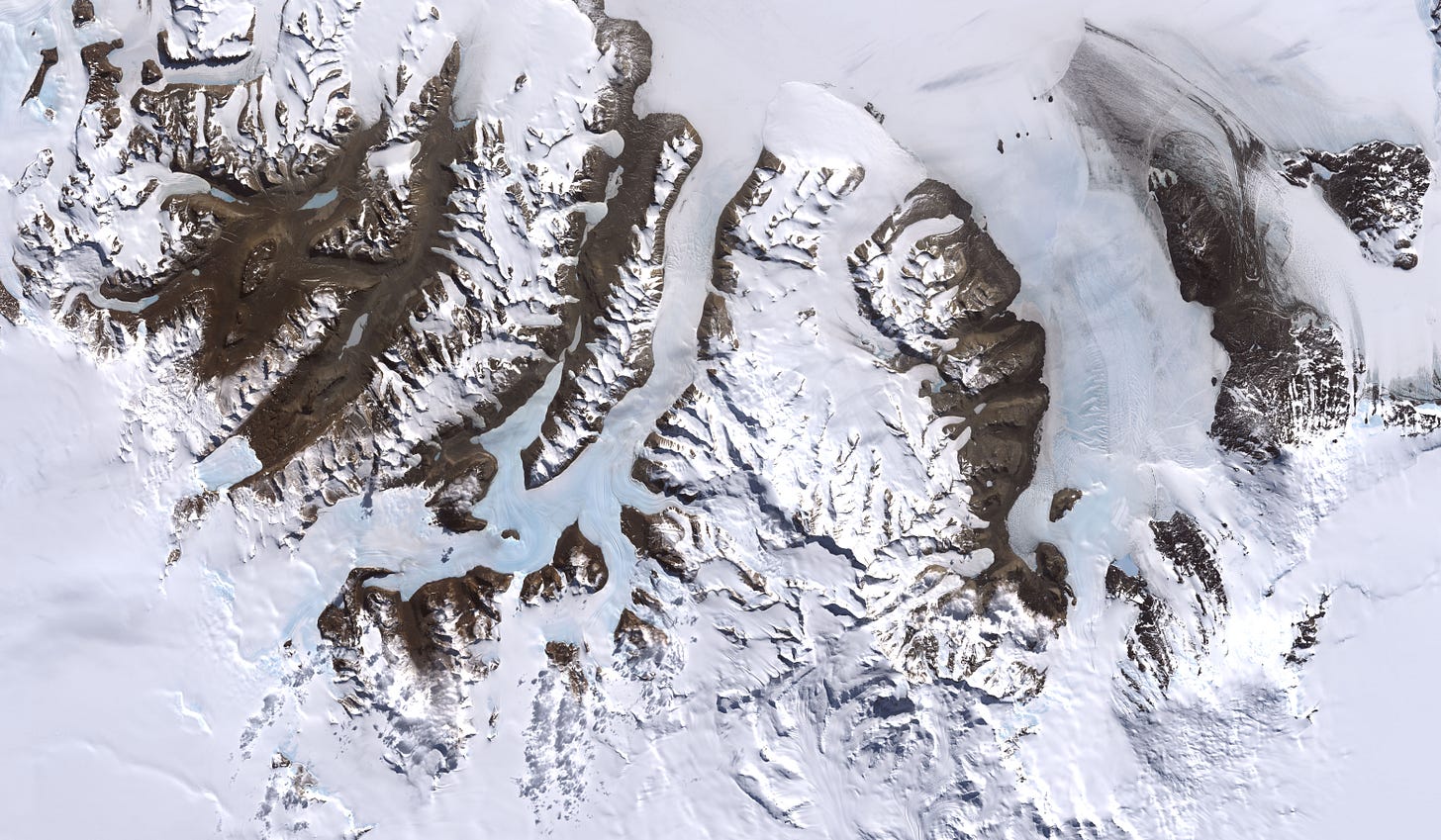Predirections content is read by >18,000 subscribers and receives more than 70,000 views each month. If you find value here and believe in accessible, independent insight, please consider joining our small inner circle of paid supporters. Become part of the select few who make this possible for everyone else:

Hi folks!
I’m in Puerto Rico this week attending the Society for Freshwater Science’s annual meeting. It has been a fun week of reconnecting with colleagues and being reminded of what amazing research is being done. But it has also been quite sobering hearing all the stories of lost jobs and funding cuts.
It has been an intense week, so this is a little delayed, but I hope you enjoy this week’s tidbits.
Last week’s location
The Sunderbans. This area stretches across part of southwestern Bangladesh and southeastern India, and is the largest remaining mangrove forest in the world. At the mouth of the Ganges, it houses the endangered Bengal tiger, sharks, crocodiles, and freshwater dolphins, as well as nearly two hundred bird species. What a cool place I hope one day to visit!
Correctly guessed by
, , and !Tool I’m exploring
One of my favourite talks at the conference so far was by Peter Levi at The Nature Conservancy. He presented their Resilient and Connected Networks tool. It combines a whole bunch of existing GIS layers into one interactive mapping tool to explore areas of high and low resilience across the US as well as a whole bunch of other stressors and biodiversity assets. Check it out — it’s fun to play around with.
The paper describing the tool is here.
Paper I’m reading
Kerr, M. R., A. Ordonez, F. Riede, J. Atkinson, E. A. Pearce, M. Sykut, J. Trepel, and J.-C. Svenning. 2025. Widespread ecological novelty across the terrestrial biosphere. Nature Ecology & Evolution: DOI:10.1038/s41559-025-02662-2.
The world is changing rapidly — much of the Earth’s surface is being transformed into novel conditions. This paper highlights three key drivers that are producing novel conditions: climate change, defaunation and floristic disruption. 58% of the total area of the terrestrial environment is exposed to high levels of total ecological novelty, and the relative contributions of the three stressors vary depending on where on Earth you look. Climate change and defaunation the largest contributors globally.
Conversation piece of the week
If we must bring back extinct species, let’s focus on the giant herbivores. A great piece by Tim Coulson discussing the benefits lost from large herbivores. Much was made a few weeks ago about the direwolf being ‘de-extincted’. But really, we need to be focusing on returning extant species to where they belong.
“Instead of trying recreate lost ecological function through the genetic tinkering of living animals that are unlikely to be allowed back into the wild any time soon, we should take a different approach. The focus should be on maintaining and restoring ecological function using existing species within the areas in which they live or once lived. The science of doing this may not be as exciting as the genetic engineering of Colossal Biosciences, but it will be easier to deliver and will be more ecologically useful.”
— Tim Coulson
Environmental news of the week
Collapsing bird numbers in North America prompt fears of ecological crisis. A paper recently published in Science found three-quarters of 495 bird species are in decline across North America. It’s a cool study using citizen science data from eBird, and showed the greatest declines are where species are most abundant.
Reminder of the week
Long-term studies are fundamental but threatened! This slightly older paper does a good job of reminding us of the value of long-term ecological research. It contributes disproportionately to the advancement of ecology as a discipline, but it is extremely threatened. Long-term ecological research is hard to fund because it doesn’t give the quick high-impact outputs that funders want. It takes time to generate important findings. The current political climate is only exacerbating an ongoing threat to this form of science. In my lab, we rely heavily on using such data collected by other folks.
As always, let me know your thoughts in the comments. Which content did you enjoy the most? Which resonated. And don’t forget to guess the photo location?
Have a fun week!
Jono
👉 Support this work for the cost of a ☕️ per month and help shape the future of this space. If you join the inner circle, you’ll get access to exclusive member-only discussions, in-depth Q&As, behind-the-scenes insights, and bonus posts.
If cost is a barrier, just message me! I’ll make something work. No questions asked. Your support — at any level — means more than you know. Thanks for considering it. 🙏







In Australia there could be a focus on the reintroduction of beneficial plant species as the rate of decay of the fire adapted landscapes has altered the rain regime across the whole continent. Large herbivores need something to eat and the focus on water intensive vs oil intensive plant communities and their ability to promote fungal and bacterial nucleation allows for a different interpretation of the dynamics of the creation of the environment these large herbivores used to thrive in .
Wrangell Mtns in AK?